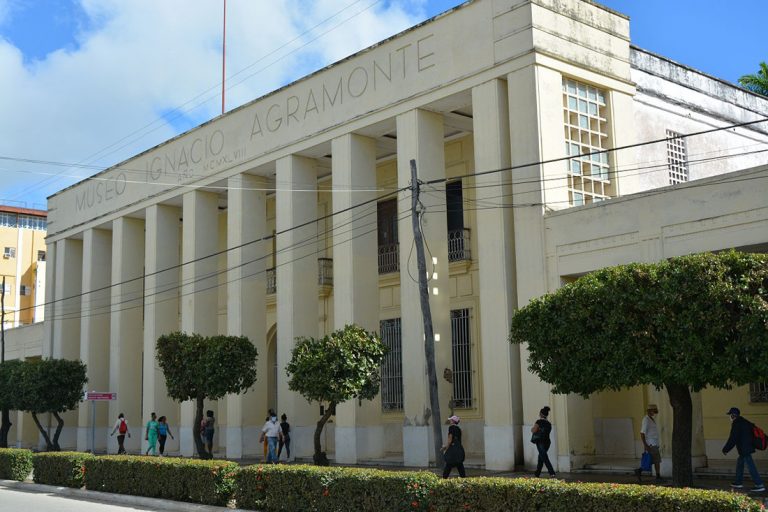By: Arlet Flores Alfonseca
The “Ignacio Agramonte Loynaz” Provincial Museum is located on Mártires Avenue No.2, between Francisco Agüero and Ignacio Sánchez, La Vigía neighborhood. It is one of the most important buildings of its time, within the system of military fortifications of the old Santa María del Puerto del Príncipe town. It was built for barracks at the end of the first half of the 19th century, and has significant characteristics within the military buildings of that time. This property also acquires an outstanding symbolic significance within Camagüey architecture in the new uses of the 20th century. The building in question is the result of consecutive upgrades or extensions that were conceived during the second half of the 19th century.
The property has a great architectural and historical value, for which it was declared a National Monument. It is composed of two levels. Its facade, belonging to the modern monumental architectural style, contrasts strongly with the colonial character of its interior, given by the presence of the central patio.
The institution
The museum has several rooms, among which stand out, on the ground floor, the Natural History Room, with a large collection of animals; the Cuban History Room and the Living Room, which is its inner courtyard.
On the second level, the Decorative Arts Rooms and the Plastic Arts Rooms coexist. In the first, valuable furniture, sculptures and objects representative of the development of these arts from the 18th to the 20th centuries are treasured. Various activities are carried out in these rooms, such as guided and specialized visits, talks, conferences, workshops, symposiums, events and cultural activities.
A necessary intervention
Due to the interest in improving the services provided by the institution and restoring the entire property (including its garden), an integral rehabilitation project was requested from the Office of the Historian of Camagüey city. To achieve this task, the project team, made up of several specialists, had the technical task and applied historical research.
At the time of the architectural survey of the museum, it was found that in general its constructive state was poor, as it presented a high degree of deterioration.
Therefore, the review of the decking and the joists was proposed, especially in the areas where humidity was detected. It was suggested to place a waterproofing blanket on the surface of the damaged board, in order to achieve greater insulation of the wood in contact with moisture.
An administrative area was planned, made up of the administration office, the secretary’s premises, the pantry and a toilet. In addition, it was proposed to restore the sanitary service and the workers’ pantry.
It was suggested to restore the carpentry and in some areas make it new with a design according to the property. The appropriate paint will also be applied to the exterior and interior walls, according to the existing color chart.
The courtyard, a representative space
The current state of construction of the inner courtyard is poor. The area is 2,620 m2 and is made up of 152 plant species. It also has a path with an irregular layout, furniture, cannons and waterpots. Restoration of these last elements is proposed, applying the necessary treatment for their durability. The proposed design must take into account the balance between the existing vegetation and the proposed vegetation.
At one end of the garden is a circular fountain, which in its center has a statue of a child, called the Manneken Pis. Since its location, this has been one of the most important pieces of Camagüey’s heritage, being admired by the thousands of visitors that the place receives. As a solution in the project, it is proposed to clean the interior of the fountain and apply a special paint to it, in addition to restoring the Manneken Pis and placing a water jet on the statue, giving it movement and sound.
Currently the construction brigades have already finished the work on the roof in one of the side wings and the construction of the administrative area.
Translated by: Aileen Álvarez García






